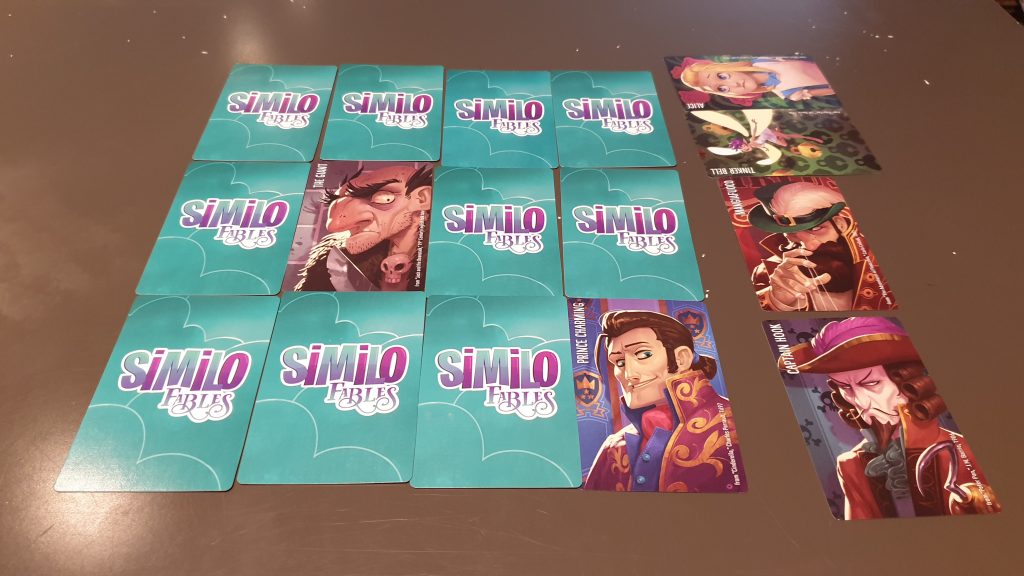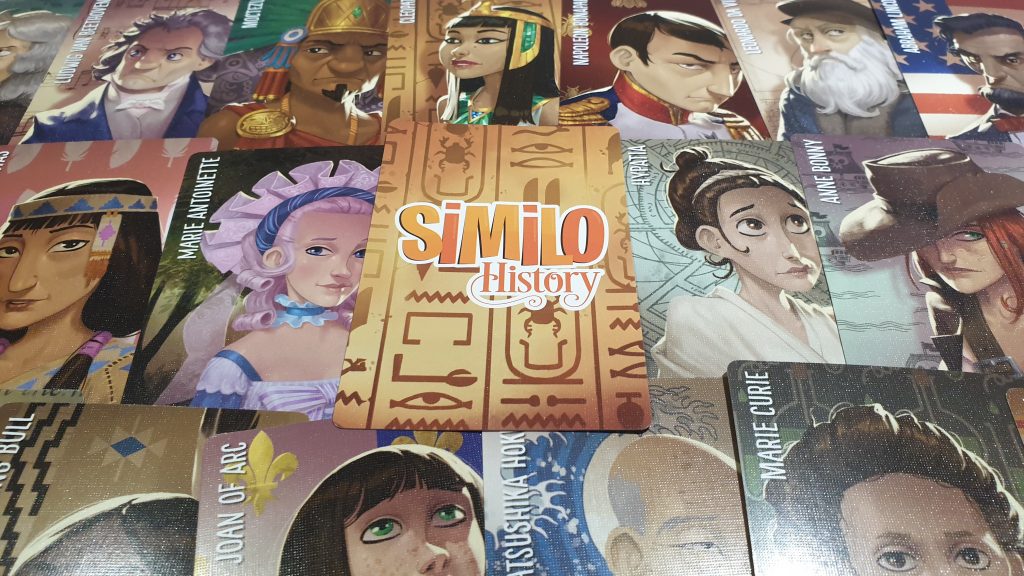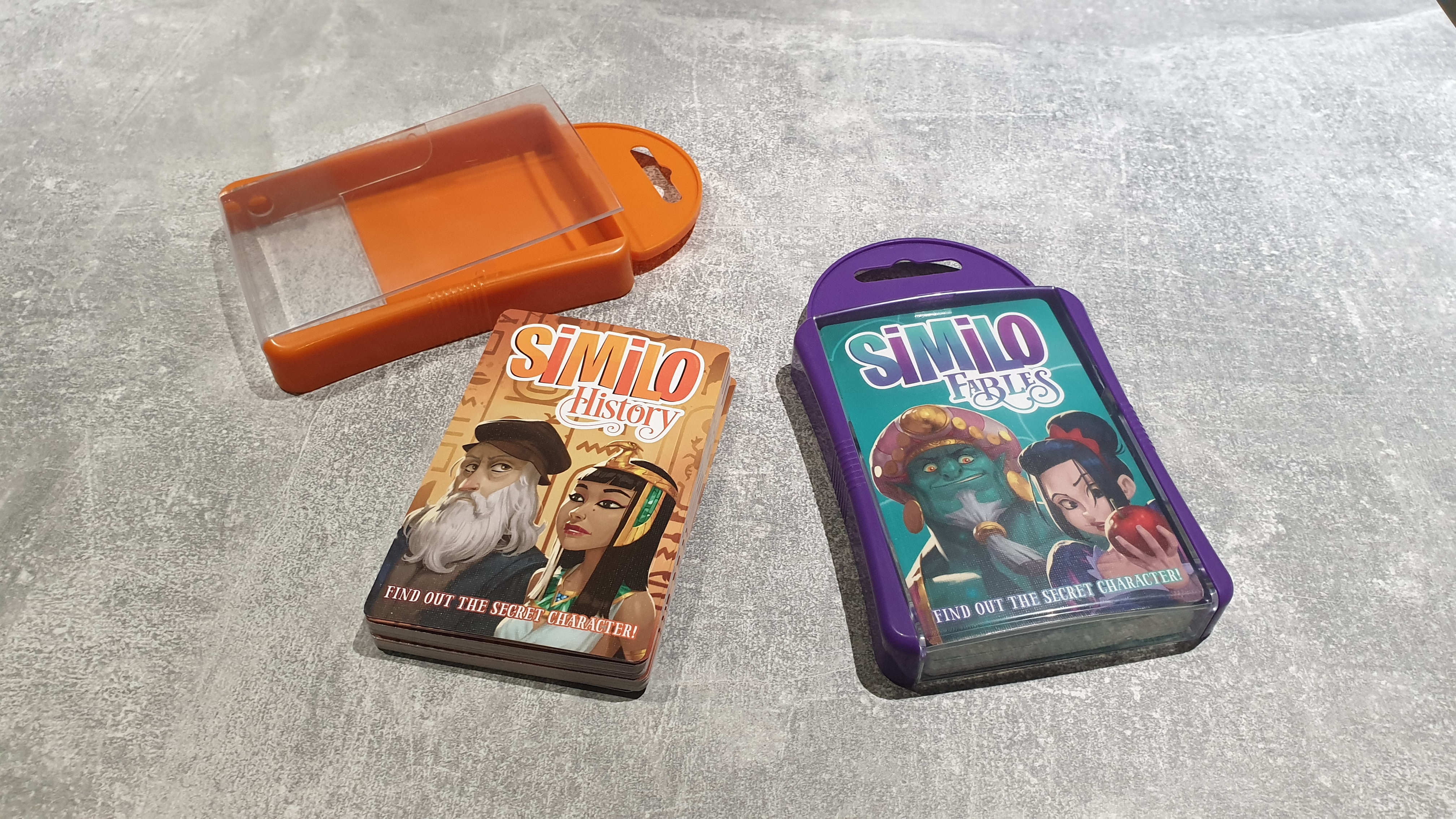Similo Fables and History have both just been released from Horrible Guild, one of the publisher’s Essen Spiel 2019 releases. Designed by Martino Chiacchiera, Hjalmar Hach and Pierluca Zizzi, the game plays with a wide player count of 2 – 8 players. With games lasting 5 – 10 minutes, players will be deducing or giving clues. Cooperatively the players must find the secret character. However, will the game go down in history or is the fun more of a fable? Let’s find out!
The game revolves around one character from the decks of 30 cards. At the start of the game one player takes up the role of clue giver. This player shuffles the deck and draws a single card. Looking at this card, making sure the other players don’t see, all the player has to do at this point is remember the card. Depending on the deck being used it will either be a famous person from History, such as Julius Caesar, or a well known Fables character, such as Pinocchio.
The clue giver player then combines the card with 11 more from the same deck. Shuffling them well, so the known character isn’t obvious, the clue giver makes a grid of the 12 character cards. The clue giver finally draws a hand of 5 starting cards. The game is played out over 5 rounds, with the rest of the players, the guessers, given a single clue each round. The clue is not said out loud. Instead, the clue giver plays a card from their hand either horizontally or vertically.
A vertical clue hints that something is like the character played, while a horizontal card suggests something is not like them. These clues can be to do with the gender, profession, era or more. In round 1 after a clue is given the guessers must turn over 1 card. In round 2, after the second clue, 2 cards must be flipped over and so on, until the final round. In the final round there is a 50:50 choice between two cards.

For all to win players must at the end of the game be left with only the correct character face up. This means each round there is plenty of tension when flipping the characters, with a slightly easier starting round. Whilst each round additional cards must be flipped players also have more clues to go on, as past clues aren’t discarded. At any point if the originally seen card is incorrectly flipped over the game is lost.
One simple mistake, which can be a tad funny, is card orientation when combining the seen character and the 11 unseen ones to shuffle. Be sure to put all the cards in the right orientation. Else what can occur is a grid of 12 characters is placed on the table with a single upside down card. It shouldn’t happen, the name on the back of the cards is one way up, so it should be clear. It doesn’t mean it hasn’t happened though!
Similo is lightning fast to play. Within a minute you can have torn off the wrapper, explained and set up the entire game. The core concept is so simple, players are solely trying to find the secret character by flipping other cards over. This simplicity is Similo’s greatest strength, it gets to the table instantly and gets players involved. It is also the reason that the game won’t stay at the table for hours, after a few games only 20 minutes have past.
Production wise the cards are of great quality. The artwork featured in both Similo decks is of decent quality, with the same artstyle used. While a lot of the characters in Fables are well known their appearances come from the original books rather than films, clearly avoiding licensing issues. This is certainly a smart move to keep the cost of the game down. One element of both sets that is particularly nice is the rules come on only a couple of cards, highlighting how simple the game is.

The packaging is so reminiscent of Top Trumps it seems fair to say they are identical. This means that both versions are incredibly portable, just about fitting into a decent sized pocket. This packaging has been a little divisive with some players almost getting a positive nostalgia and others wishing it was a normal box.
While there are rules to play with History and Fables together the sets aren’t truly combinable. An effort has been made, with one deck used for clues with the grid made from the other deck. This is particularly hard to do though. There aren’t many historical figures that Tinkerbell or Puss in Boots can hint towards. The packaging also doesn’t entirely help as they can only be stored together not as one, whereas in a box they could be potentially together.
Similo works well at two, yet there is an extra spark to the gameplay when additional players get involved. With 2 the clues can be tailored to the single guesser, yet if they are stuck of whom the clue giver is hinting at they are on their own. As soon as more players get involved the game becomes both easier and harder. The guesser role has less pressure on it, so the game is a little easier on them individually. The game can also become harder if the guessers start failing to agree. After arguing which card to turn over, if the wrong one is selected the shouts of “I told you so” are brilliant. While stretching up to 8 might be a push a group of guessers is certainly entertaining to watch.
Regardless of which version you get the gameplay is the same and the artwork is strong. With the entire game lasting mere seconds if instantly out or 10 minutes if a group is arguing what clues mean, Similio is a great filler for when short on time. Back to back games manage to avoid feeling the same, due to the variety in the deck. Something only increased if switching between the two decks. However, due to the way there is limited interaction between the decks, it may be best to get one or the other, depending on if Fables or History grabs you most.
(Editor’s Note: Similo Fables & Similo History were provided to us at Essen Spiel 2019 for the review.)

